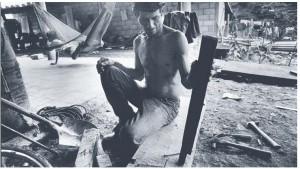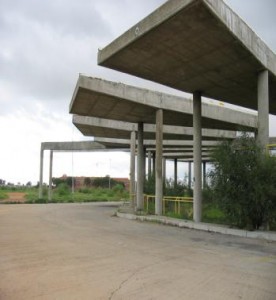China Allocates 20k Hectares for Low-Income Housing
chinadaily.com. August 8, 2012. BEIJING — China has allocated more than 20,000 hectares of land to support the construction of low-income housing this year, an official with the Ministry of Land and Resources said Tuesday.
The nation plans to distribute 47,600 hectares of land for low-income housing projects in 2012, more than the 43,600 hectares allocated last year, Vice-Minister Hu Cunzhi said at a seminar on low-income housing policies.
China has stepped up the construction of low-income housing in recent years, as skyrocketing home prices have triggered public complaints.
Housing prices have shown signs of rebounding over the last few months, after the government eased its grip over credit control to buoy the slowing economy.
The government has maintained its previously-adopted tightening measures such as higher down payments and property tax trials to cap home prices.
It has vowed to build 36 million affordable housing units during the 2011-2015 period to meet the demand from low-income families. In 2011, it started construction on 10 million units.
Read more: China Allocates 20k Hectares for Low-Income Housing
– With Links to More Stories to China’s Housing Policy
El Salvador en transición
El acuerdo de paz firmado el 16 de enero de 1992 entre el gobierno y el movimiento rebelde FMLN puso fin a más de diez años de guerra civil en El Salvador. En este capítulo trataré los antecedentes de esa guerra y el desarrollo y el proceso que llevaron al acuerdo de paz. El énfasis radica en los cambios entre el estado, los partidos políticos y las organizaciones de la sociedad civil. De esta manera surge una imagen del contexto social en que nacieron las organizaciones de ayuda para el desarrollo y del espacio donde estas organizaciones intervinieron. Para dar una imagen global del contexto histórico de la guerra civil, me adentraré primero en algunos importantes desarrollos políticos y económicos que tuvieron lugar entre 1870 y 1970. Trataré después a los principales actors en los decenios anteriores a la guerra civil. Estos eran, entre otros, los (nuevos) partidos políticos, los militares, las organizaciones paramilitares, la iglesia y los movimientos revolucionarios. Seguirá a continuación el tema de la guerra civil, en el que se prestará atención al papel desarrollado por el FMLN, los partidos políticos, el gobierno salvadoreño y los Estados Unidos. Para terminar, se tratará el acuerdo de paz. Esbozo allí los cambios principales que tuvieron lugar en base a la llamada ‘triple transición’ en El Salvador.
Una historia de exclusión
Para Torres Rivas y González Suárez (1994:12), la guerra civil fue el resultado de un largo período de exclusión social, económica y política a la que fueron sometidos grandes sectores de la población. Este proceso tuvo profundas raíces históricas y llevó en los años sesenta y setenta a la polarización y al agravamiento de la crisis en la sociedad salvadoreña. La crisis social que surgió en estos años no puede explicarse sólamente como el resultado de la influencia de los Estados Unidos o de la oposición de la poderosa oligarquía agraria a las reformas (Carrière y Karlen, 1996:368). Hubo una combinación de factores internos y externos que en los años anteriores a la guerra impidió una modernización a fondo de la política, la economía y la sociedad. La mayoría de los análisis de la guerra civil salvadoreña comienzan en la segunda mitad del siglo pasado. Este fue el período en el que se desarrollaron el cultivo y la exportación de café a gran escala. El café tuvo una influencia definitiva en las relaciones sociales salvadoreñas en gran parte de ese siglo. El cultivo y la exportación de este producto fueron la reacción ante la disminución de la demanda internacional de indigo, un colorante azul oscuro de textiles que constituía hasta entonces el principal producto de exportación de El Salvador. Las mejores condiciones para el cultivo del café se dan en suelos situados entre los 500 y los 1.500 metros sobre el nivel del mar. Una gran parte de los suelos adecuados para el cultivo del café eran propiedad comunal, entre otros de pueblos indígenas. El gobierno dirigido (desde 1871) por los liberales era partidario de la comercialización en el usufructo de los suelos y abolió la propiedad comunal de la tierra en las reformas de 1881 y 1882. Un número relativamente pequeño de familias (entre ellas las dedicadas antes al cultivo del indigo) compró grandes extensiones de tierra, dominando rápidamente la producción y el comercio del café. Read more
Vivek Wadhwa – In Chile’s Slums, a Lesson in How to Make Apps for Social Good
www.washingtonpost.com. April, 2, 2012 – How many of the hundreds of thousands of mobile phone applications seek to do truly great things, such as lift people out of poverty or improve health care for the poor?
The App Economy, to date, has largely touched the lives of those living in the developed world. This is due, in part, to the high cost of smart phones but also because app development has lacked real vision and purpose. I have found that Silicon Valley, generally speaking, doesn’t build apps to save the world or lift people out of poverty. It builds them to sell Angry Bird t-shirts and generate lots of virtual currency.
The folks at Centro de Innovación in Santiago, Chile, aim to change that.
I met Julian Ugarte, an Industrial designer, and his team during a recent trip to South America, and I was blown away by what they are trying to do. On March 22, Ugarte and Centro de Innovación launched a contest with Movistar — a mobile subsidiary of Telefonica — and TechoLab, a non-profit subsidiary of Un Techo para mi País (UTPMP) — a pan-Latin American NGO that dispatches youth volunteers on projects to eradicate the extreme poverty that affects tens of millions in Latin America. A $10,000 prize will be given to each of the creators of the best three apps that address problems facing the millions of people living at the bottom of the pyramid (BoP).
Read more: V. Wadhwa – In Chile’s Slums a Lesson in How to Make Apps for Social Good
Awareness Is Power: Tactics For Staying Safe In Violent Spaces
Violence is everywhere (Lindiwe, Hector Peterson Residence).
In order to understand the concept ‘awareness’, Hastrup’s (1995) explanation of consciousness is invaluable, especially to identify with people’s behaviour in violent situations. She explains that our patterns of thinking are not subject to paths of practical reason, but that we rather constantly reformulate our whole existence through our actions; a reconsideration of our ideas of consciousness is thus necessitated (ibid.: 99). Hastrup reminds us that we are inarticulate and that expression is not limited to the verbal. Expression, rather, takes place in various forms (ibid.).
Given Hastrup’s suggestion to understand consciousness from multiple angles, we approach a field within which questions of ontology and methodology join: how do people think and how do we know? (ibid.; Ross 2004: 35). What tools should anthropologists use to access these forms of consciousness that are so intertwined in social space, affecting it, being affected by it and being its defining capacity? In an environment of violence, students are affected, they can potentially have an influence on this through the tactics they use to stay safe and, at the same time, can become the defining capacity of such an environment. These are among the dynamics involved in conceptualising ‘awareness’ of potential danger in potentially dangerous areas. This awareness is positioned on various levels.
- Page 3 of 3
- previous page
- 1
- 2
- 3




